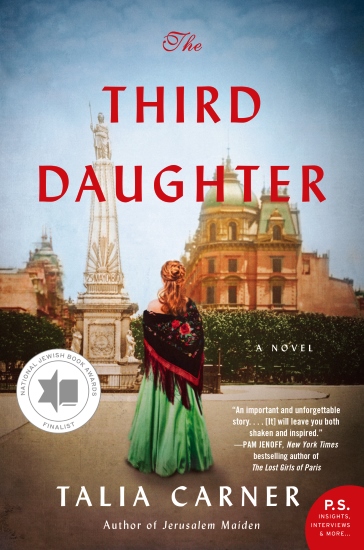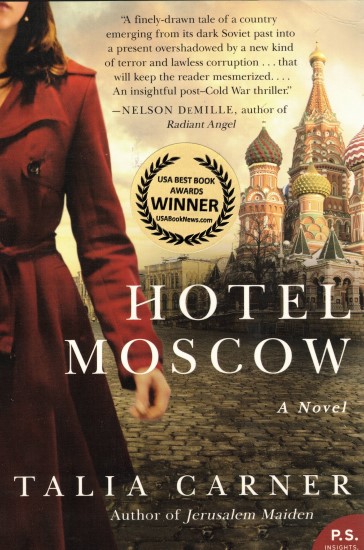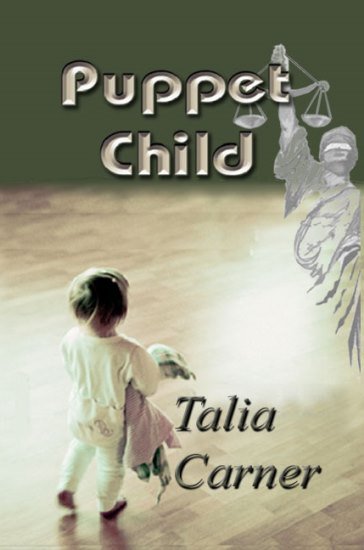Zwi Migdal’s method of kidnapping women for prostitution was as described in this novel: Well-dressed men, speaking Yiddish and flaunting their success, returned to visit their native Eastern European countries on recruitment expeditions subsidized by the union. They offered marriages and jobs in the New World.
The 400 years of persecution of Jews in Europe through official anti-Semitic policies had severely restricted Jewish occupations, land ownership, and the permitted places of residence—all coupled with repeated bloody pogroms in Russia, Belarus, Ukraine and Poland. (In 1918–1919 alone over 1,200 pogroms took place in Ukraine alone, and a pogrom was even reported in 1904 in Ireland.) The unrelenting savagery and slaughtering to which the Jews were subjected made them vulnerable to the charm of the traffickers and their promises.
The victims, girls and women ranging in age from early teens to early thirties, were repeatedly raped and beaten, caged, starved, and physically tortured. By the time their ocean voyage ended three to four weeks later, they were broken. There are no records of the suicide rate during this early stage of the “training.” But in Inhaúma cemetery in Rio de Janeiro, Brazil, established by the local Jewish prostitutes, a large, separate section for suicide victims—as ordained by Jewish burial rituals—tells the tragic story of many of these women once they had arrived and were put to work. In the rest of the cemetery, the disproportionate number of tombstones of prostitutes who died in their twenties and thirties reveals the fate of the rest of them.
Zwi Migdal members regarded their “merchandise” in much the way owners of black slaves in North America and the Caribbean did: they were less than human, with only economic value. However, unlike the enslavement of Blacks by Caucasians, this was Jew-on-Jew crime, with family members often preying on their own kin: Not only were offers of a better life “in America” extended to nieces and sisters-in-law back home, but family men who had left their wives behind in Eastern Europe sometimes brought them to Argentina or Brazil in order to force them into prostitution. These men may have left Eastern Europe believing in the myths of incredible riches, but they were unskilled and did not speak the language. Failing to find jobs, they were embraced by The Warsaw Society and apparently bought into the new entrepreneurial spirit in which the pimps viewed themselves—as businessmen.
Sex trafficking in Argentina was so culturally associated with Jews that the name for a pimp in Spanish, “Caftan,” was borrowed from the word for the long black coat worn by Jewish Orthodox men. Similarly, “Polaca,” the word for a prostitute, was adopted from the Yiddish name for Polish women.
Records of Jewish ownership of brothels as early as the 1895 census in Buenos Aires, Argentina, show in one city block alone a concentration of 20 brothels housing 200 women. Concurrently, an 1899 city registry of prostitutes in Buenos Aires, reveals that 30% of them were Jewish. A record from 1913 shows over 3,000 brothels in Buenos Aires and 430 in Rio de Janeiro, with Jewish ownership disproportionally large—data that are corroborated by records of The Varsovia Society from that year, listing 400 members (a roster that soon grew to over 500.) By the 1920s, Jewish brothels employed 30,000 women, each generating on average 3,000 pesos a month in a country where the average monthly salary was below 100 pesos. At the turn of the 20th century, Zwi Migdal’s profits were reported at $50 million a year.
The union’s activities comprised not only trafficking but also gaming houses and smuggling operations. Members pooled their resources to bribe government officials, police, and legislators, keeping many of them on a monthly payroll. When traffickers were arrested, the mutual-aid society hired shrewd lawyers, bribed judges and prosecutors, and had either the charges dropped or the cases won. The bribing at all levels included not only cash, entertainment, and expensive gifts, but also apartments and cars. Before long, Jews were seen as the source of the systematic corruption of Argentina, Brazil, and Uruguay.
* * *
Who in Europe knew what was going on? Victor Hugo wrote a letter in 1870, condemning “white slavery” from Europe to South America (although he didn’t single out Jews.) Shalom Aleichem, the popular Yiddish storyteller, whose character of Tevye the Dairyman appeared in a series of his Railroad Stories, wrote in 1909 about “The Man From Buenos Aires.” From a Polish newspaper report in 1891 to a Polish novel in 1930—and numerous articles about local arrests of traffickers in Poland during the in-between years—the published information was unlikely to reach the Yiddish-speaking Jewish population that was not only illiterate in the language of the country where they lived, but also too dispersed in the countryside to have access to news. In 1919, the Treaty of Versailles denounced trafficking as a crime, and in 1921, the League of Nations (the precursor to the United Nations) held an International Conference on White Slave Traffic. Two years later, a French journalist, Albert Londres, who had ingratiated himself into the traffickers’ networks in South America, published in France a lengthy exposé that detailed the horrific conditions in which the women lived, with those in La Boca serving up to 70 men a day. The exposé was translated to Spanish and English in 1928 and was reviewed in the New York Times. None of these languages were spoken by the Eastern European victims or their families. Several plays about pimps and prostitutes were produced in Spanish and Yiddish in South America earlier in the century—dramas depicting current events, and too late for the women already enslaved there.
If the reports—and even an occasional letter that sneaked from under the traffickers’ vigilance—failed to reach families before they entrusted their daughters to the care of strangers, or alarm desperate widows seeking ways to feed their children, they finally prompted into action some benevolent organizations in the Jewish communities of Great Britain, Austria and Germany. Women activists of Ezrat Nashim, League of Jewish Women, and the Jewish Association for the Protection of Girls and Women (JAPGW) roamed European train stations and seaports, on the lookout for naïve girls either traveling alone or in the company of well-heeled men. These activists distributed flyers and attempted to offer advice and warnings before the would-be victims sailed away. Unfortunately, rarely was the advice heeded or even believed. The lure of the chance for a life better than the hell of starvation and anti-Semitic in Europe was too strong.
* * *
Alarmed by these developments and fearing being trapped yet again in the horrors of anti-Semitism from which they’d fled Europe, upstanding Jews in South American opposed this immorality that tainted them all. They shunned the pimps and prostitutes, blocked their access to their synagogues, and refused to bury these “tme’yim”—sullied, impure—in their cemeteries. Local Jewish benevolent and charity organizations not only refused to extend services to prostitutes and their children, but forbade any discussion of their cases at their meetings. However, the Jewish communities’ efforts to discredit the traffickers, refuse their generous donations to the synagogues and Yiddish theaters, and engage with the authorities to limit Zwi Migdal’s influence were futile in Argentina, where a 1908 law allowed unlimited recruitment of prostitutes to brothels, further legalizing ownership of “white slaves.” At times, both in Buenos Aires and Rio de Janeiro, the conflict between the two Jewish factions escalated into violent confrontations.
While ownership of prostitutes was legal, it was subject to restrictions such as trice-weekly medical check-ups, providing the women with clean living conditions, allowing them freedom of movement—and giving them the right to collect and keep their earnings—none which were met by the traffickers. Therefore, in some cases, subjugated women managed to lodge an official complaint. In 1896, Sophia Chamys, age eighteen, after five years of beatings and betrayals by her husband, Isaac Boorosky, spoke to a policeman in the 4th Precinct in Rio de Janeiro. Once before, when her husband had trafficked her in Buenos Aires, she had tried to complain, but got no traction with the police there. This time, the policeman wrote down her lengthy story. Boorosky was arrested—then promptly released. In 1910, in Buenos Aires, Rosa Schwartz, a.k.a. “Lili of the Jewels,” threatened to expose Zwi Migdal, and was murdered. Ester K., Irena A. and Reise K. (full last names never recorded) were turned away from the police station when, independently, each attempted to file a complaint. In retaliation, their owners sold them to brothels in the interior of the country. In Brazil, Klara Adam denounced her pimp, Sigmond Richter, with documents. Her testimony “evaporated,” but as happened to a woman in this novel a “Professor” penned a condemning letter to her family in Poland, shutting down her escape route back home.
* * *
What finally brought Zwi Migdal to its knees? Early on, Argentina’s government condoned prostitution. It let it thrive in the rapidly expanding colonial settings not only because of the massive profits the state received from the brothels’ taxes (in 1920, 25% of the state’s money was generated by brothels), but also because as a Catholic state it believed that this necessary evil “protects good women, families and gender order.” However, Zwi Migdal’s crimes and corruption motivated Julio Alsogaray, a Federal Police Commissioner in Buenos Aires, to act. He had been obsessed for a decade with his mission “to clean up the pollution of Argentina” and had forged an alliance with other Jews who condemned the traffickers when, on New Year’s Eve 1929, into his office walked Raquel Liberman. The 29 year-old prostitute, the widowed mother of two boys, had arrived from Poland seven years before. Having tried to get out of prostitution, she had invested her savings in an antique shop. Time and again, Zwi Migdal sent goons to ransack her shop, forcing her back into a brothel.
Liberman’s cooperation was what Julio Alsogaray had waited for. In May 1930, after Zwi Migdal had operated for 60 years, a 10-day police raid accompanied by photographers and newspapermen arrested 300 pimps. Unsurprisingly, the union had been tipped off, and hundreds of Zwi Migdal’s members had fled the country—temporarily. Of the 300 men arrested, only 112 went to trial, and of those, only three were sentenced to prison. The others were exiled, but returned within three to five years. Unrelated to these events, in September 1930, a coup d’état brought a nationalist, fascist—and puritanical—government to power in Argentina and the constitution was replaced, outlawing brothels and abolishing regulated prostitution, (though allowing private exchange of sex for pay.)
Earlier, in 1913, the government of Brazil declared that it would not be “a clearing house for the white-slave trade.” It deported 120 pimps, who transferred the running of their brothels to madams until they themselves could return, which they did shortly after. However, in 1930, as in Argentina, a military coup d’état put the dictator Getúlio Vargas in power. Soon, his strong alignment with fascist Italy and Nazi Germany singled out the Jews as responsible for the country’s economic woes. Jews were barred from entering the country, and pimps and prostitutes were sent back to their now-Nazi-occupied countries of origin, where they most likely perished.
Zwi Migdal was weakened, but did not cease its operation throughout South America. It continued until 1939, when Hitler invaded Poland and traveling there was no longer possible.
Despite all the available documentation about this trafficking syndicate, researchers have been reluctant to pinpoint the number of girls and women kidnapped or enslaved over 70 years. It is estimated, based upon the known figures of the peak numbers of brothels, the number of workers, and the recorded earnings generated, that between 140,000 and 220,000 women fell victims to the schemes, not counting the thousands who committed suicide before they began working, and therefore did not contribute to the confirmed profits.
This novel is their story.
* * *
JEWISH HISTORY IN ARGENTINA is more complex. Read on:
Immigrants to Argentina (statistics with photos):
Project Gutenberg: Argentine Republic Immigration Offices and Statistics from 1857 to 1903
Argentina’s Last Jewish Cowboys
Jewish Encyclopedia: Jewish Colonization Association
Tangele: Jewish Life in Argentina Reflected in Yiddish Tango
The Jewish White Slave Trade in Latin American Writings ,by Nora Glickman
Argentina: Jewish Women, by Sandra McGee Deutsch
Polacos, White Slaves, and Stille Chuppahs, By Mir Hayim Yarfitz





